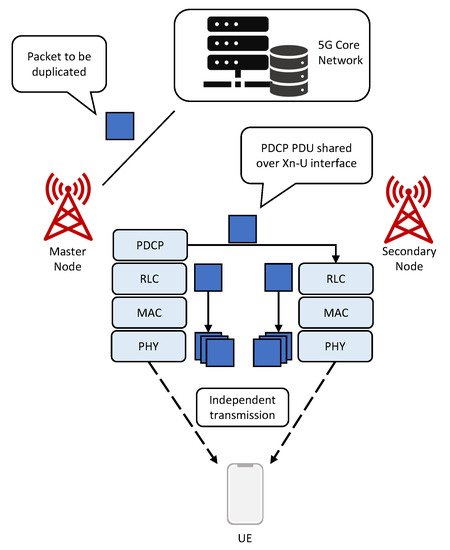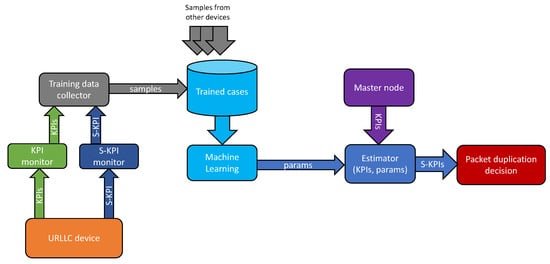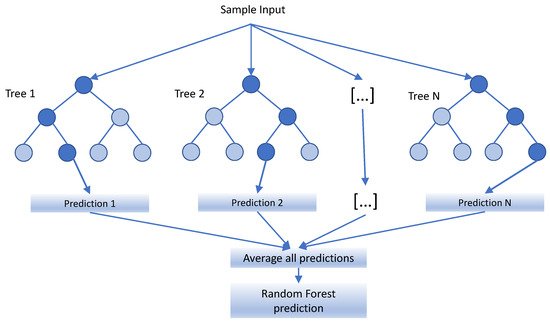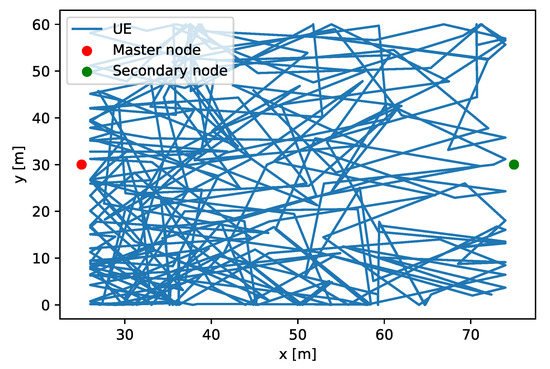The fifth-generation (5G) network is presented as one of the main options for Industry 4.0 connectivity. To comply with critical messages, 5G offers the Ultra-Reliable and Low latency Communications (URLLC) service category with a millisecond end-to-end delay and reduced probability of failure. There are several approaches to achieve these requirements; however, these come at a cost in terms of redundancy, particularly the solutions based on multi-connectivity, such as Packet Duplication (PD). Specifically, this entry proposes a Machine Learning (ML) method to predict whether PD is required at a specific data transmission to successfully send a URLLC message. This entry is focused on reducing the resource usage with respect to pure static PD.
- 5G
- machine learning
- prediction
- Industry 4.0
- URLLC
- multi-connectivity
1. Introduction
2. Background
2.1. 5G Multi-Connectivity Overview
2.2. Packet Duplication for URLLC
PD is a multi-connectivity solution that improves reliability by increasing redundancy of the transmission. When PD is activated, the PDCP entity in the MN is responsible for PD, whereas the PDCP entity in the receiver is responsible for detecting and removing duplicated packets. The PDCP entity duplicates the packet data unit (PDU) to avoid twice performing functions, such as ciphering, header compression, integrity protection etc. This PDCP PDU has the same sequence number in both. Then, the packet is forwarded by MN to the SN via Xn-U interface for transmission to the UE. The packet will undergo through independent Radio Link Control (RLC), Medium Access Control (MAC) and physical layer processing at each gNB. This implies that the packet can be transmitted at different time intervals and over different frequency resources and that physical transmission aspects, such as beamforming, MCS, ACK/NACK signaling and the Hybrid Automatic Repeat Request (HARQ) mechanism, are independent. On the receiver side, multiple copies of the packet are received, and the UE will forward the first successfully received packet to the higher layers and remove duplicated packets received later, based on the PDCP sequence number. Figure 1 shows a 5G NR-NR PD scheme for downlink transmission.
3. Proposal
3.1. System Description
Figure 2 shows the overall architecture of the system. There are three main domains: the device, which contains the sample collection modules; the server, which runs the ML algorithm and stores a dataset with solved trained cases; and the MN, which contains the estimator. The device needs to receive URLLC messages, and therefore KPIs and S-KPI are forwarded to the server, which runs the ML algorithm and is located at the network edge with computational resources and access to a non-restrictive power source.
3.2. KPI to S-KPI Mapping
3.3. Random Forests
In this entry, random forests [34][13] were selected for the implementation of the ML part of the system. The choice of this method is based on the computation simplicity once the model has been trained, since fast prediction for URLLC services must be performed. Random forests are an ensemble method commonly used to resolve several types of ML learning problems, such as classification and regression. A random forest consists of a set of decision trees. Each decision tree takes the input to the forest and returns an estimated value. The structure of the tree is created in the training process. On each tree, a decision is performed by comparing the input with a threshold. Based on the output of the comparison, a new comparison is performed with a different input and threshold, which determines the prediction of the tree. To improve the accuracy, each decision tree output is aggregated. For regression, the aggregation method is typically the average of the output of all the trees. A summarized scheme of the random forests prediction is shown in Figure 3.
4. Tests
4.1. Simulation Scenario

4.2. KPIs Recollection
5. Conclusions
Many solutions have been proposed for URLLC connectivity in order to achieve high reliability and low latency; however, these typically come at a cost in terms of resource usage. This entry proposes a scheme to predict the E2E latency in order to determine if the PD technique is required for downlink transmissions (dynamic PD) and, thus, reduce the resource wasting. The proposed algorithm uses a ML approach, where an estimator is running in the MN. The algorithm was implemented and tested in a 5G simulator, showing high accuracy for determining whether or not to activate PD for a packet transmission. Moreover, the PD technique was evaluated using the predictor (once the model is already trained). The results obtained show that the proposed dynamic PD based on the E2E latency prediction is more efficient than always duplicating, obtaining a high PD reduction rate (81%) and maintaining the same level of latency below the threshold. In addition, when activating PD based on the predictor, the latency reduction is higher than when using always duplicating technique, that is, there are so many unnecessary packets duplicated, where the latency constraint can be fulfilled by a single connection. A comparison between PD techniques and a single connection was performed, where PD techniques demonstrate that help to achieve URLLC latency constraint.References
- Lasi, H.; Fettke, P.; Kemper, H.G.; Feld, T.; Hoffmann, M. Industry 4.0. Bus. Inf. Syst. Eng. 2014, 6, 239–242.
- Zaidi, A.A.; Baldemair, R.; Tullberg, H.; Bjorkegren, H.; Sundstrom, L.; Medbo, J.; Kilinc, C.; Da Silva, I. Waveform and Numerology to Support 5G Services and Requirements. IEEE Commun. Mag. 2016, 54, 90–98.
- Segura, D.; Khatib, E.J.; Munilla, J.; Barco, R. 5G Numerologies Assessment for URLLC in Industrial Communications. Sensors 2021, 21, 2489.
- Pedersen, K.; Pocovi, G.; Steiner, J.; Maeder, A. Agile 5G Scheduler for Improved E2E Performance and Flexibility for Different Network Implementations. IEEE Commun. Mag. 2018, 56, 210–217.
- Jacobsen, T.; Abreu, R.; Berardinelli, G.; Pedersen, K.; Mogensen, P.; Kovacs, I.Z.; Madsen, T.K. System Level Analysis of Uplink Grant-Free Transmission for URLLC. In Proceedings of the 2017 IEEE Globecom Workshops (GC Wkshps), Singapore, 4–8 December 2017; pp. 1–6.
- Khatib, E.J.; Wassie, D.A.; Berardinelli, G.; Rodriguez, I.; Mogensen, P. Multi-Connectivity for Ultra-Reliable Communication in Industrial Scenarios. In Proceedings of the 2019 IEEE 89th Vehicular Technology Conference (VTC2019-Spring), Kuala Lumpur, Malaysia, 28 April–1 May 2019; pp. 1–6.
- Mahmood, N.H.; Lopez, M.; Laselva, D.; Pedersen, K.; Berardinelli, G. Reliability Oriented Dual Connectivity for URLLC services in 5G New Radio. In Proceedings of the 2018 15th International Symposium on Wireless Communication Systems (ISWCS), Lisbon, Portugal, 28–31 August 2018; pp. 1–6.
- 3GPP. TS 36.300, Evolved Universal Terrestrial Radio Access (E-UTRA) and Evolved Universal Terrestrial Radio Access Network (E-UTRAN); Overall Description; Stage 2; V12.10.0, Rel-12. Available online: https://portal.3gpp.org/desktopmodules/Specifications/SpecificationDetails.aspx?specificationId=2430 (accessed on 17 September 2021).
- Rosa, C.; Pedersen, K.; Wang, H.; Michaelsen, P.-H.; Barbera, S.; Malkamäki, E.; Henttonen, T.; Sébire, B. Dual connectivity for LTE small cell evolution: Functionality and performance aspects. IEEE Commun. Mag. 2016, 54, 137–143.
- 3GPP. TS 37.340, Evolved Universal Terrestrial Radio Access (E-UTRA) and NR; Multi-Connectivity; Stage 2; V16.0.0, Rel-16. Available online: https://portal.3gpp.org/desktopmodules/Specifications/SpecificationDetails.aspx?specificationId=3198 (accessed on 17 September 2021).
- Rao, J.; Vrzic, S. Packet Duplication for URLLC in 5G: Architectural Enhancements and Performance Analysis. IEEE Netw. 2018, 32, 32–40.
- Lorca, J.; Solana, B.; Barco, R.; Herrera-Garcia, A.; Palacios, D.; Fortes, S.; Demestichas, P.; Kosmatos, E.; Georgakopoulos, A.; Stavroulaki, V.; et al. Deliverable D2.1: Scenarios, KPIs, Use Cases and Baseline System Evaluation. Technical Report, E2E-Aware Optimizations and Advancements for Network Edge of 5G New Radio (ONE5G). 2017. Available online: https://one5g.eu/wp-content/uploads/2017/12/ONE5G_D2.1_finalversion.pdf (accessed on 28 September 2021).
- Geurts, P.; Ernst, D.; Wehenkel, L. Extremely randomized trees. Mach. Learn. 2006, 63, 3–42.
- NS-3-A Discrete-Event Network Simulator for Internet Systems. Available online: https://www.nsnam.org/ (accessed on 20 September 2021).
- Patriciello, N.; Lagen, S.; Bojovic, B.; Giupponi, L. An E2E simulator for 5G NR networks. Simul. Model. Pract. Theory 2019, 96, 101933.
- 3GPP. TR 38.901, Study on Channel Model for Frequencies from 0.5 to 100 GHz; V16.1.0, Rel-16. Available online: https://portal.3gpp.org/desktopmodules/Specifications/SpecificationDetails.aspx?specificationId=3173 (accessed on 20 September 2021).
